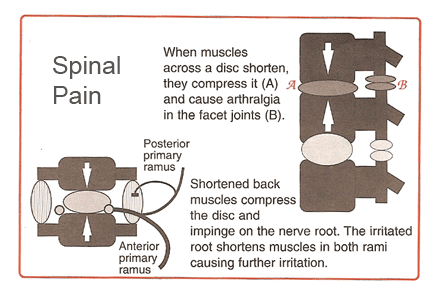Signs of Neuropathy:
Neuropathic pain can be confirmed by demonstrating physical or visible features of nerve dysfunction in the painful area, as well as at the corresponding spinal level. There are subtle signs that you can even use yourself at home to confirm the category of pain. These signs outperform laboratory tests and are frequently more sensitive than radiological investigations. Dr. Gunn’s Radiculopathy Model outlines these neuropathic features below:
Sensory Alteration:
- The painful area is tender to finger pressure. Tenderness is maximal over motor points where the nerve enters a muscle or tendon. These generally correspond to acupuncture and trigger points.
- Sometimes multiple tender points occur when more than one spinal segment is involved, which is known as fibromyalgia.
- Tenderness can also be located in the spinal muscles.
Autonomic Features:
|
|
|
|
Goosebumps |
Skin Rolling Test |
Matchstick Test |
Orange Peel |
Internal Organs:
Peripheral nerves all innervate internal organs. Neuropathy in these autonomic nerves often goes unsuspected. The following conditions give strong indications of neuropathic origin: irritable bowel syndrome and adult respiratory distress syndrome (ARDS).
Trophic Changes (due to reduced neural stimulation):
- Localized hair loss
- Brittle Nails
- Psoriasis (Abnormal skin)
Muscle/Motor Abnormalities:
- The most important and widespread features of neuropathic pain.
- Changes within muscle can be extremely painful (supersensitive nerve receptors in muscle).
- Shortened muscles can produce mechanical pain by pulling on tendons and joints.

|